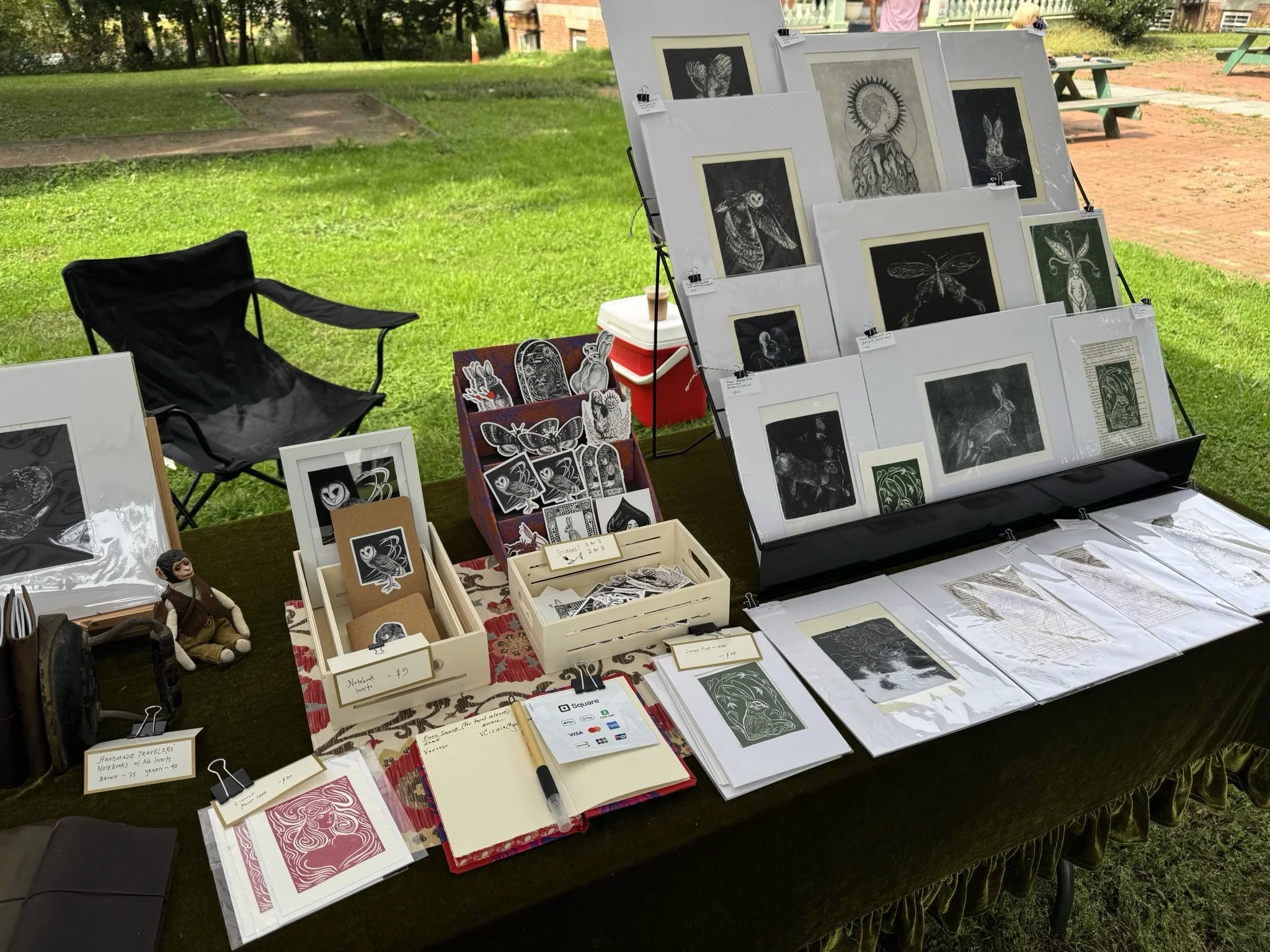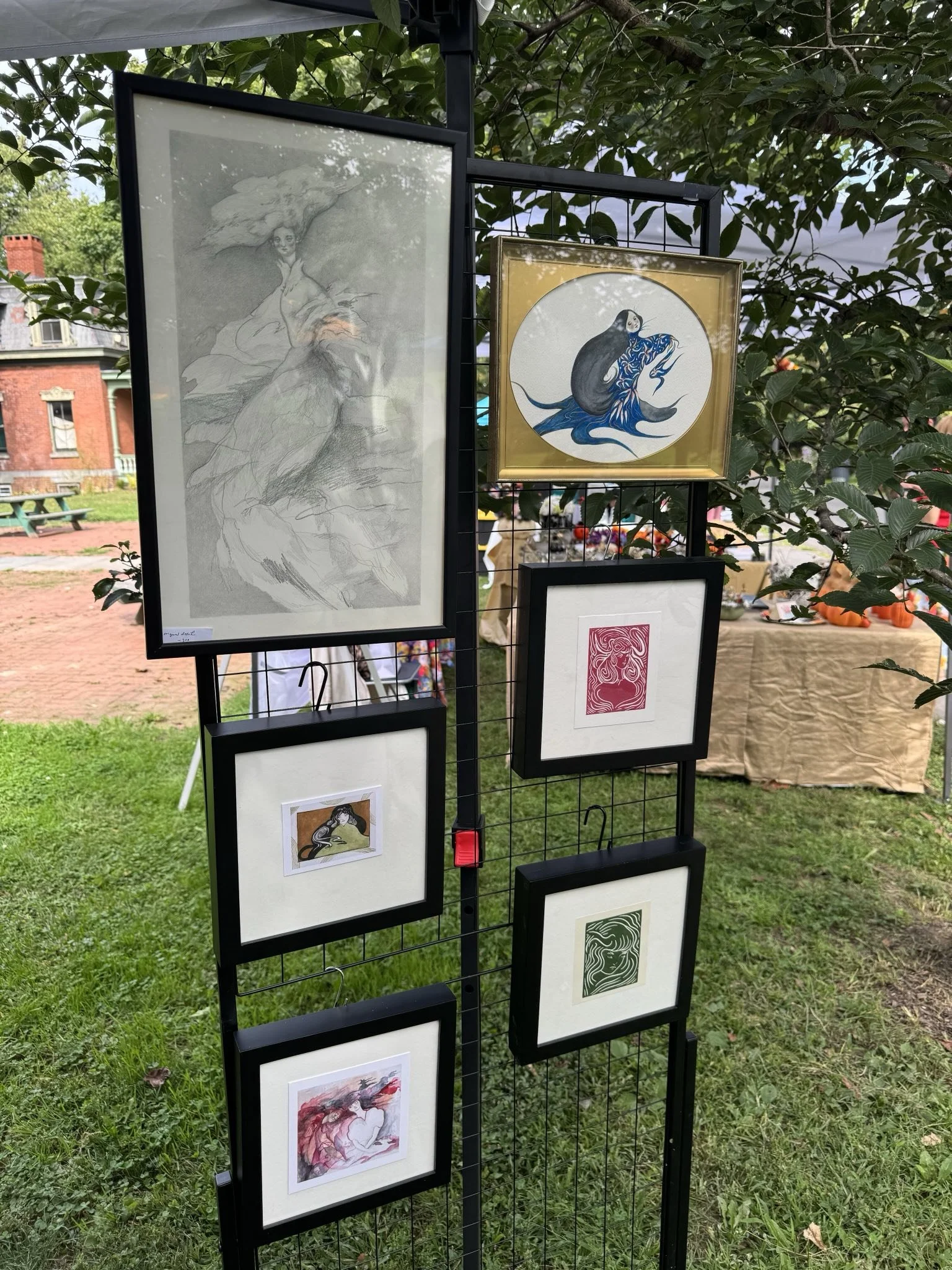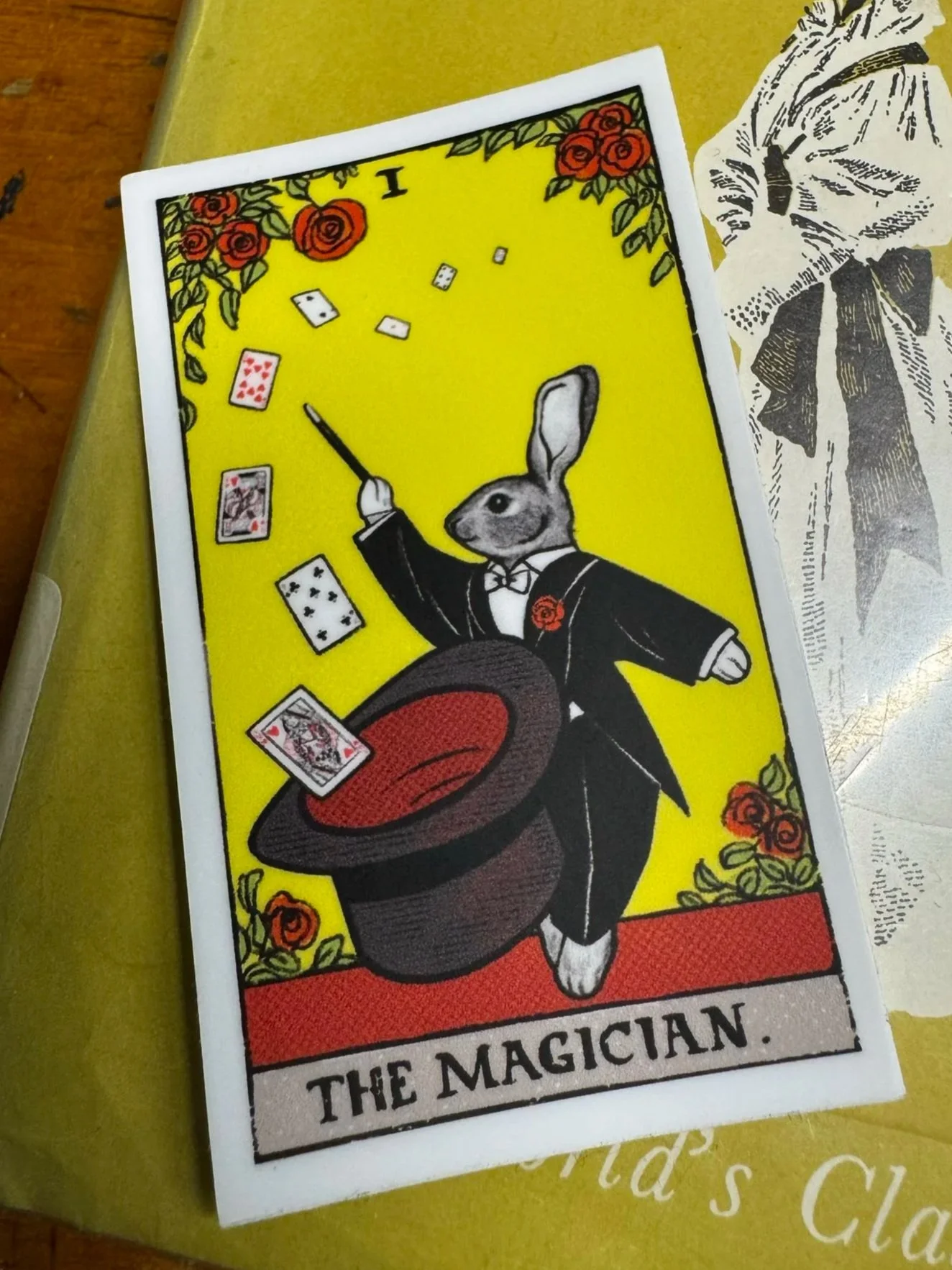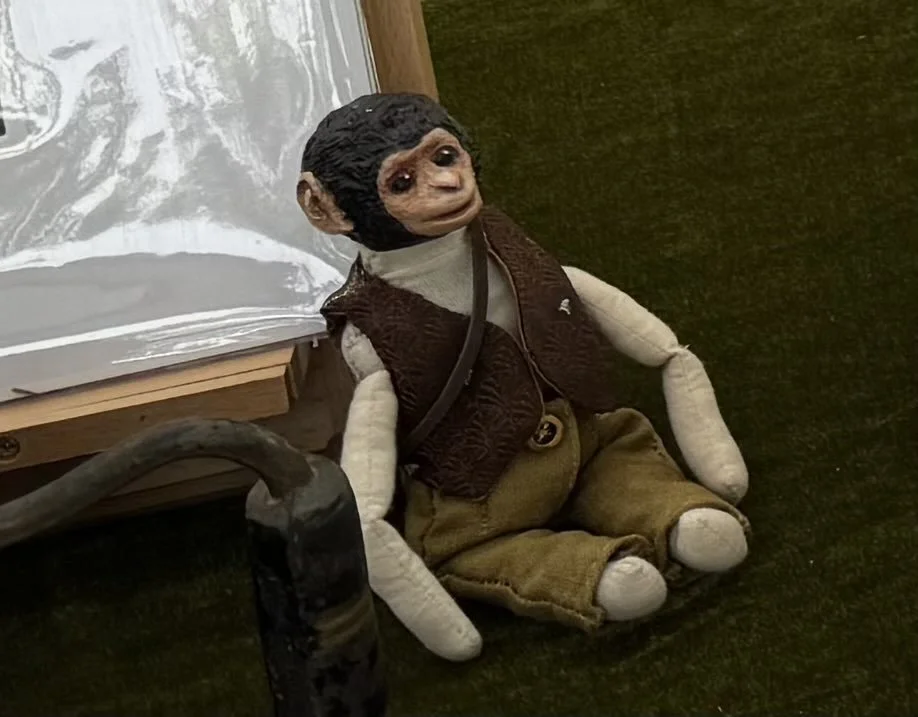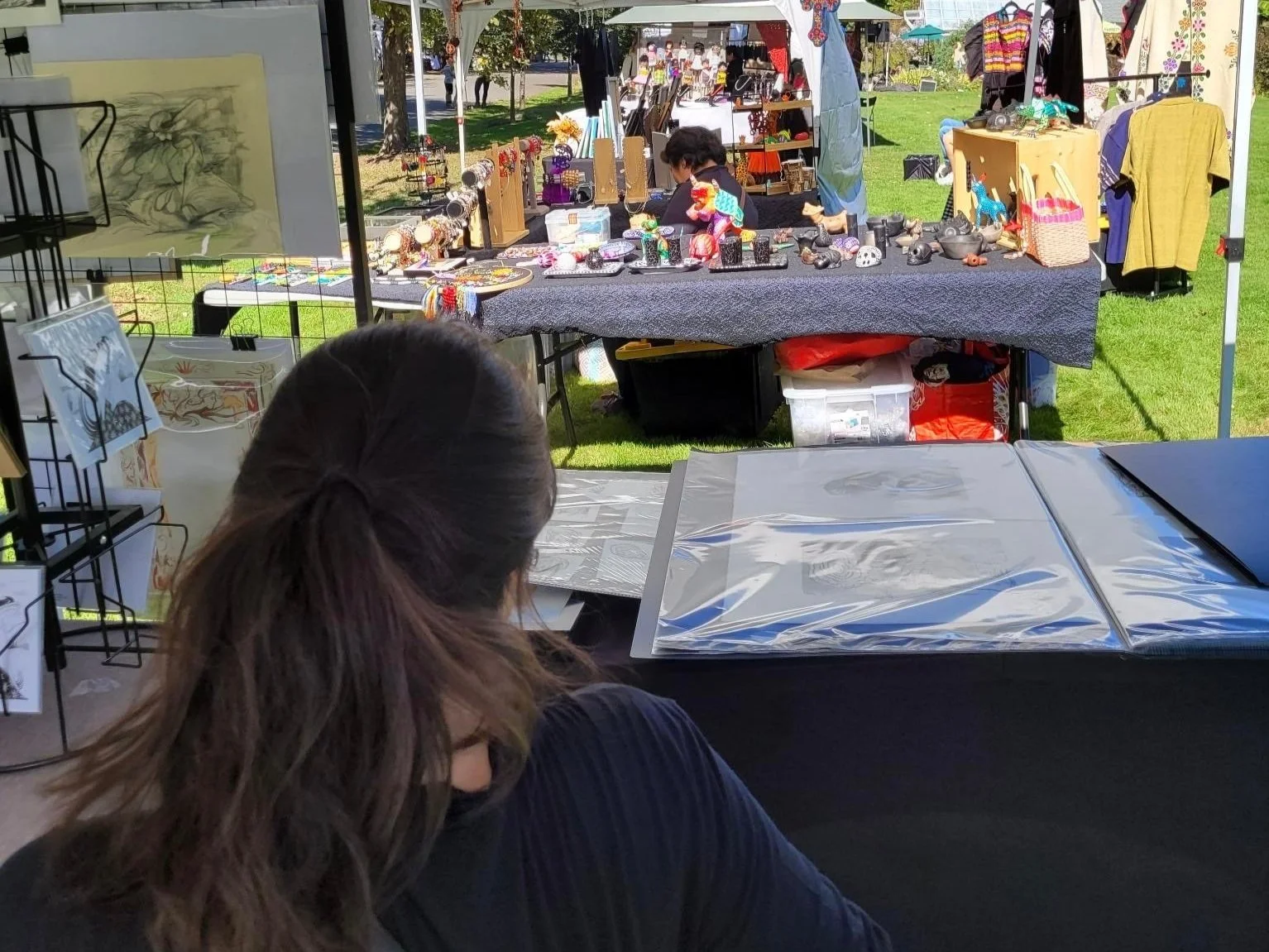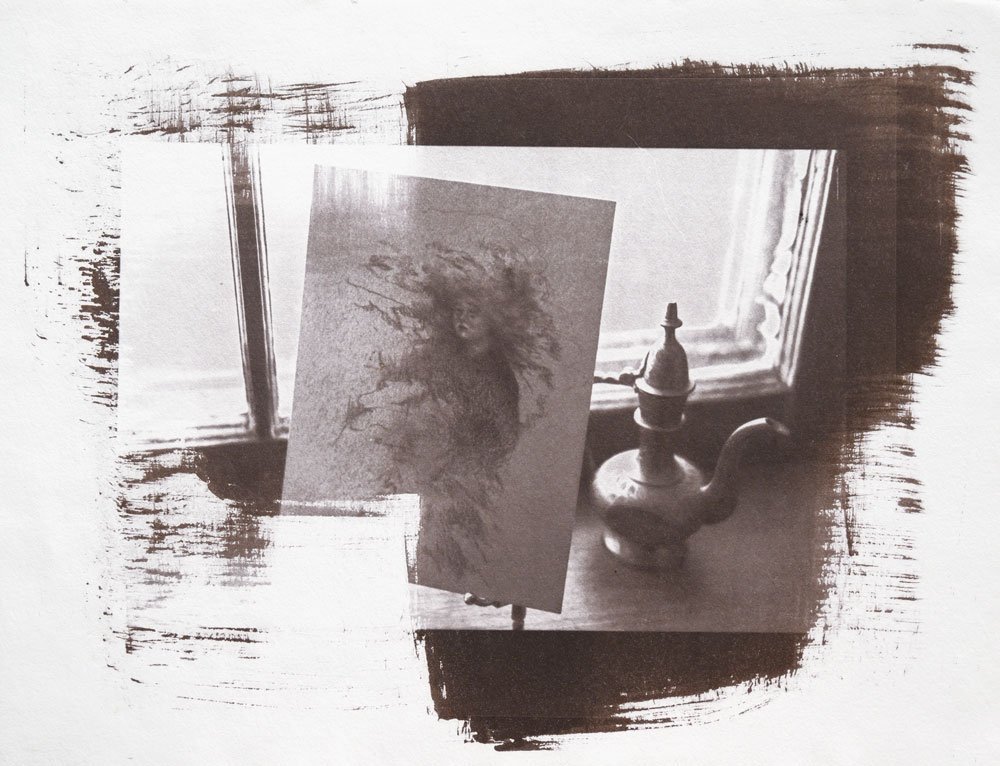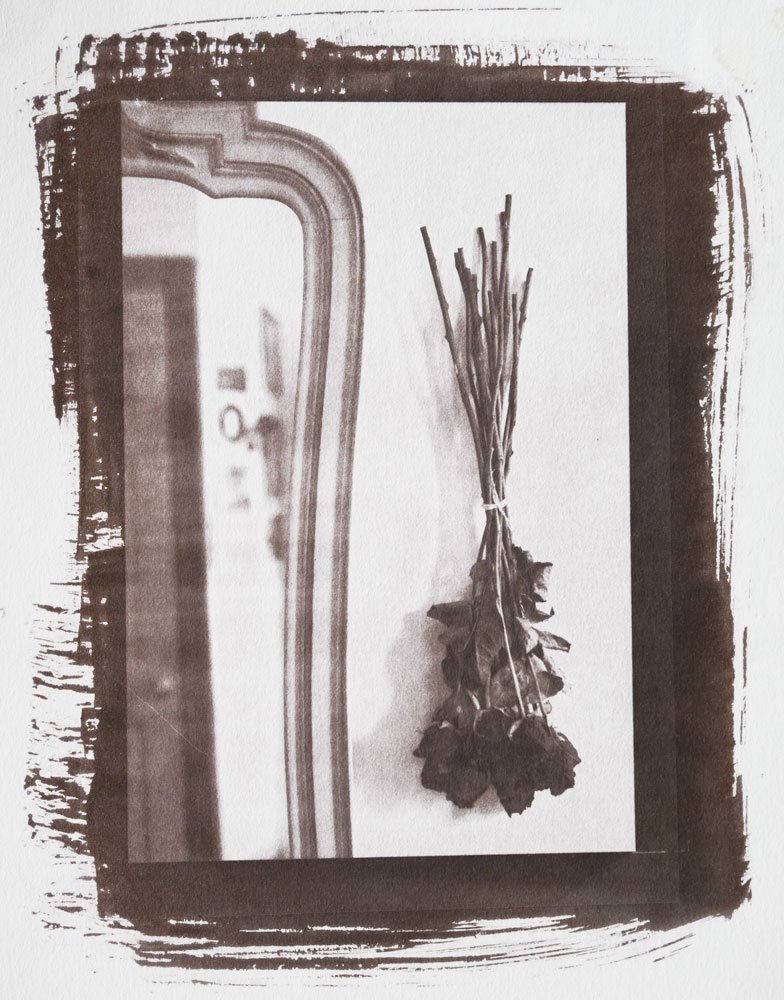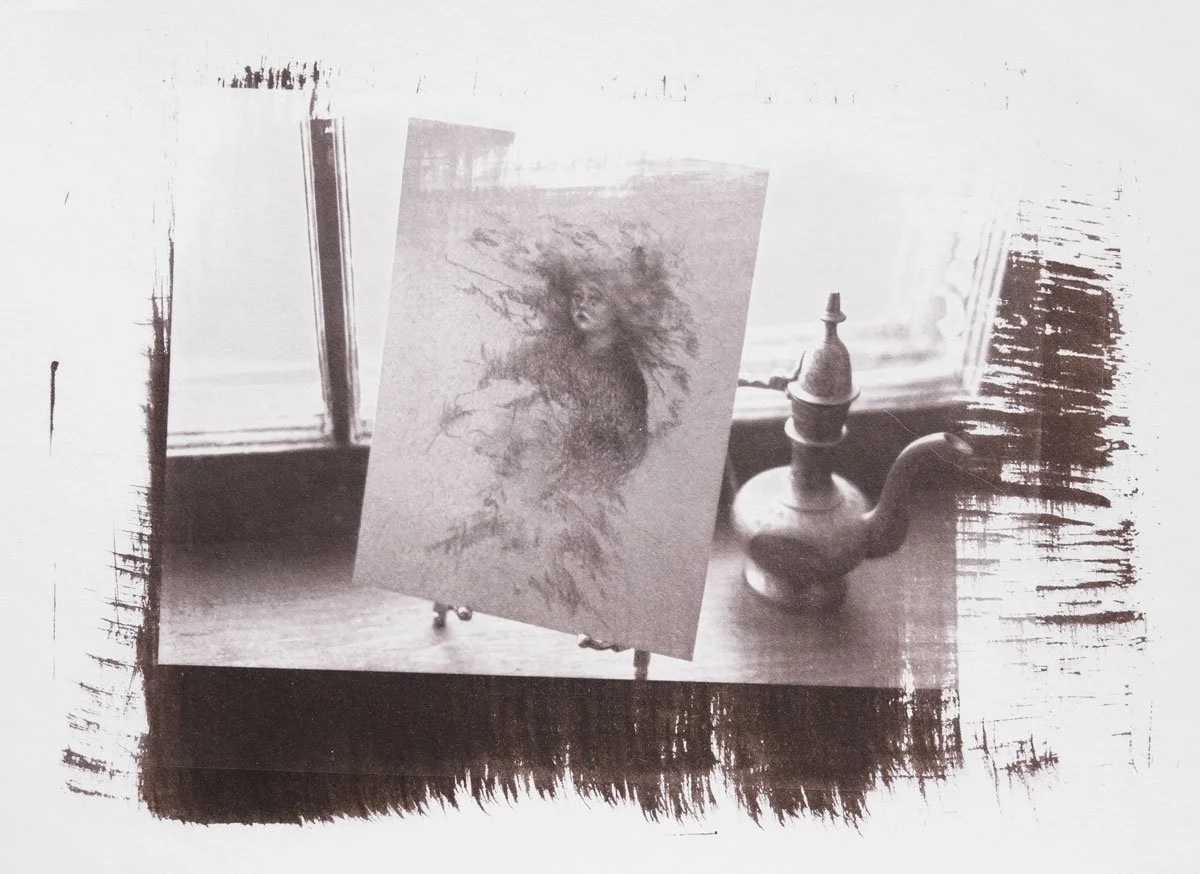Hi everyone! It’s been a busy year, but I am excited to make a few important announcements, and talk about a few life updates I am excited about.
Artwork display
Upcoming Markets
I have been present at a lot of markets over the last year. It has been a quiet build, and a great learning experience. I’ve gone from selling exclusively fine art pieces from my studio drawers, to creating hand-bound books, leather work, stickers, wearables and framed illustrations.
I appreciate everyone who has accompanied me on this creative journey, in addition to all the makers I have been able to meet this year, who have informed aspects of my work. I will be doing a lot of holiday markets, this year in the NY-area (view this year’s market release schedule here).
Handmade leather sketchbook, filled with thick drawing paper.
Bookbinding
A synchronicity I did not expect, since my first days selling at markets, was the joy I would have creating handmade objects from natural materials. An entirely handmade object contains a special power that is very inspiring to me and it is a gift bringing those kinds of objects into the world.
I think my love of working with leather started when a dear friend gifted me a handmade watercolor sketchbook from the Union Square Holiday Market as a graduation gift. And I noticed over the years, how many of my sketchbooks came and went, but that one survived every purge. A second moment of inspiration happened at a job I had for a few years in my 20’s, where one of my tasks involved minor repairs and maintenance on some of the 19th century fine bindings. As time streamlines ahead, I seem to be returning again and again to the handling of leather.
I have been hand-stitching a number of books, made from a Spanish leather hide I acquired from FABSCRAP, a nonprofit that recycles commercial textile waste. I’ve also been sourcing leather from other distributors. The whole process of sourcing leather for books has been reminding me that not all leather is made equal. Some leather tanneries go above and beyond in their production process, producing pieces that are supple and lush to the touch; while others have a brittle texture that require restoration before they can be used.
Fabric Junk Journal
I started on creating travel companion books that take A6 inserts. They’re for the traveling artist/writer that always needs to carry a notebook in their pocket/purse. I have always found that the fancier a book is, the more hesitant I am to use it. The removable A6 notebooks means you can swap out the books without ever needing to throw away the cover.
I have since moved on to create all number of different journals, from full-size watercolor sketchbooks with hand-stitched pages. I’ve also been prototyping books using different binding techniques. For daily-use sketchbooks, I have definitely been leaning towards the lumbeck process (I love how books made with this process open/feel). I have also been making quilted fabric ‘junk journals’ out of recycled/reclaimed fabric for creative scrap-booking and assemblage projects. These will be all be available at the upcoming holiday markets.
Doll-making, Tarot and ‘Animal Carnival’
Last fall, I began taking my illustrative craft in a new direction, and began working on a series of pieces comprising Animal Carnival. This was inspired by a few art threads, I’ve found myself coming back to again and again over the years: decorative art, folk animals, fairy tales, and whimsical children’s entertainment from the 19th/ early-20th century.
“The Magician” Tarot card design actualized as a sticker.
A major project within Animal Carnival is a tarot deck. I have been using the famous 1909 Rider-Waite tarot as a focal point, re-imagining the illustrations within a whimsical animal world.
The tarot contains 78 color images. I set the date of the pre-release to Summer/2026 (link here). I am trying to hold back my rampant perfectionism to fine-tune every image, with the necessity to make my deadline. I think the end-result will be worth it, and truly cherished.
I’m drawn to the deceptive simplicity and rich use of color in the Rider-Waite deck. There are so many theatrical and nostalgic aspects that work together flawlessly. So much time has gone into researching the symbolism of tarot decks, as well as other older historic decks. It has been a very enjoyable process creating my own interpretation of the images.
The second great undertaking of Animal Carnival has been doll-making. I began my first prototype, a monkey named ‘Felix’, who I intended to be the basis of a much larger series.
Felix, the monkey.
I created Felix’s head out of polymer clay, which I then sanded, primed and painted. His body, I made out of muslin, and packed with cotton. I never made a doll with a cloth body before, so there was a lot of drafting, re-drafting, and trial-and-error.
I do a lot of antiquing, and I was inspired to make a doll that reminded me of some of the ‘oddities’ I have seen on the shelves of thrift stores. I imagined Felix as a monkey-assistant to a mad magician (among other similar themes). I wanted him to be well-dressed for the part.
It took me a while to find the right material for his clothes, but I eventually settled on a thick repurposed chartreuse linen, as well as a repurposed vintage tie for the vest. Repurposed ties are perfect for making doll formal-wear, because they often have tiny intricate patterns, that translate better to scale. I also made him a small leather satchel to hold papers and small notes.
What I learned from this experience, are the complex components that go into making an ‘art doll’. I was able to cover the basics, but there are many tricks of the trade I have yet to learn. I had the most difficulty resolving drafting errors in his clothing (specifically in his vest). Pattern drafting for clothes is not generally my forte. Having the clothes fit Felix’s body was only half the battle. To get the clothes to fit ‘well’, I felt like I had to become a tailor and stylist working on a micro-scale.
For my next project, I intend to cast the head so that there can be multiple editions. The durability of polymer clay is not something I would trust—at least as much as resin or porcelain. I’m looking forward to having three-dimensional pieces to showcase alongside my printed work.
The animal monoprints I made, earlier this year, were early inspiration for ‘Animal Carnival’
The intention of Animal Carnival is to create a series of art pieces that relates externally, in contrast to the internal dialogue of my paintings. I often think about how, until very recently (as in the last 100-200 years of human history), every toy, puppet or costume was made by hand. The creations, by consequence, are rich with intention and history, with each mark/ stitch. I would like the things I create to have that effect.
Final Thoughts
I will create a second update, with the progress of some of my fine art pieces, and some more recent images and concepts that have been inspiring my work.
Looking forward to seeing many of you before the holidays. Cheers~
All the best,
Robyn

